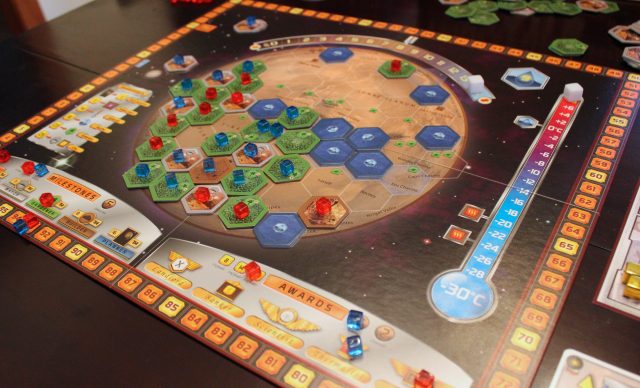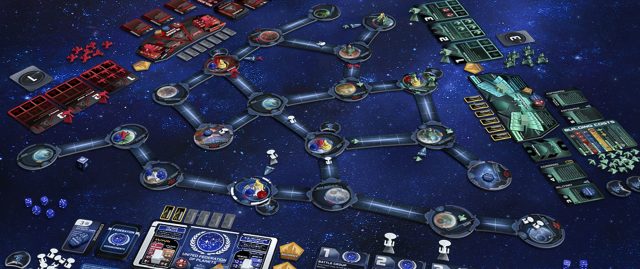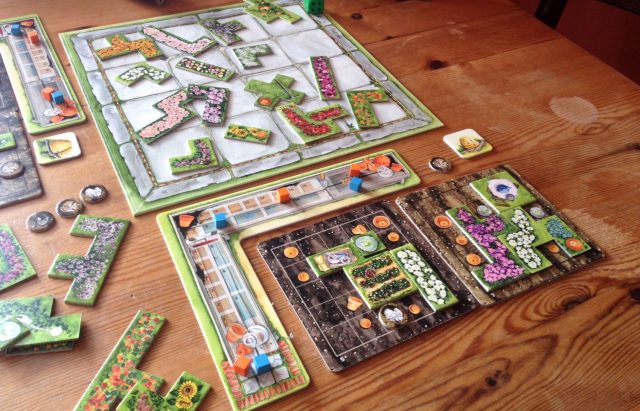
Do you get unhealthy levels of enjoyment from unwrapping decks of cards, punching out cardboard tiles, and evaluating the heft and finish of wooden cubes? We do, too—we're gamers, after all—and 2016 was a tremendous year for tabletop gaming. The tireless members of the Ars Cardboard crew spent a lot of time playing, replaying, and dissecting the year's new titles, and we're ready to tell you what we enjoyed most.
A caveat: because so many games appear each year, and because the board game release calendar is so heavily weighted toward the latter half of the year, we didn't (and simply couldn't) play absolutely everything. But we gave it a good shot!
So here, in no particular order, are our 20 favorite tabletop games of 2016—along with a few runners-up and notable new editions.
Scythe
Jamey Stegmaier, Stonemaier Games, 1-5 players, 115 minutes, age 14+
(Currently difficult to find, check your local game store)

Set in an alt-history 1920s Europe, Scythe suits players up in giant mechs to spar for control over hexes on a giant board. But although it looks like a big ol' wargame, Scythe is actually a deep, puzzly Euro. Wins usually hinge less on overt violence and more on how effectively you've been able to set up an efficient production chain. Military posturing—puffing up your chest to dissuade other players from horning in on your slowly growing kingdom—provides the game with a constant source of tension and interactivity.
Scythe is a huge, lavish production with top-of-the-line components and fantastic gameplay. Playing a game of Scythe feels like An Event, even though it won't take you the entire day to get through. I said in my review that this was the best game I’d played up to that point in 2016. Many other amazing games later, Scythe remains my personal #1.
—Aaron Zimmerman
Terraforming Mars
Jacob Fryxelius, Stronghold Games, 1-5 players, 90-120 minutes, age 12+
(Currently difficult to find, check your local game store)

Terraforming Mars is a bit of an ugly ducking. Its cards feature inconsistent art and bland photos pulled from the public domain, its iconography recalls early-2000s clip art, and its player boards are infuriatingly thin and lackluster at performing their required function. So why can’t we stop talking about this game? It’s really, really good.
Based on Kim Stanley Robinson's hard sci-fi "Mars trilogy," Terraforming Mars puts players in the role of mega-corporations racing to make the Red Planet habitable. You’ll be pumping up the atmosphere's oxygen level, raising planetary temperature, and filling the terrain with oceans. A huge stack of unique cards drives the addictive engine-building gameplay, and a tile-laying war on the main board keeps players engaged with each other throughout the game.Piecing together a winning strategy out of the cards the deck throws at you is super-satisfying, and the game plays well at all player counts. Science nuts with an interest in complex strategy games: buy this game. Absolutely one of the best of the year.
—Aaron Zimmerman
Star Trek: Ascendancy
Aaron Dill, John Kovaleski, & Sean Sweigart, Gale Force Nine, 3 players, 90-180 minutes, age 14+
($60 on Amazon, other options)

Forget the personal narrative; sometimes you just want to experience the grand arc of a civilization. Star Trek: Ascendancy delivers that feeling in a three-hour package as the Federation, Klingons, and Romulans explore the galaxy, develop its resources, subdue its native peoples, and eventually encounter (and fight) one another. Did I mention that it comes with tons of plastic spaceships, too?
The real strength of the game lies in its lack of a "board;" instead of a fixed map, the galaxy is built anew every play through a clever system of planets and the space lanes that lead away from them in any direction. Where you choose to explore and how you defend the entry points to your empire will have real repercussions. Research cards provide powerful bonuses if you have the patience to earn them, while upgrading shields and weapons for your battle fleet can make you almost invincible.But this isn't just a battle game; fleets don't always win the game, and "cultural hegemony" (think Hollywood's global influence writ large) and peaceful exploration are all viable paths to victory.
Though I'm not typically a fan of long games—they simply prove too difficult to play regularly—each play of Star Trek: Ascendancy was engaging throughout, and this one is highly recommended to fans of the theme and genre.
—Nate Anderson
Captain Sonar
Roberto Fraga & Yohan Lemonnier, 2-8 players, 45-60 minutes, age 14+
($42 from several stores)

Imagine Battleship but with submarines. The submarines move. They can deploy mines, sonar, and torpedoes. And they take damage on every turn, damage that can cripple ship systems if not properly managed. Oh, and this all happens in real time, with up to eight players.
Captain Sonar is exactly as tense and crazy as it sounds (though it does offer a turn-based variant for lower player counts or when learning the game). Success depends on the captain charting a course that tracks the other sub while also avoiding the "wrong" kinds of damage. It requires a radio operator who can plot the opposing team's relative course and eventually plot it accurately onto a map. And it demands weapons and engineering expertise so that, when the opposing sub has been located, weapons are both charged and able to fire.
The game caught our eye at Gen Con 2016 and has since proven itself to be great fun with groups. One downside is that its ultra-crazy real-time mode really needs a full eight players to shine—and getting a group like that together can be rare. But if you're looking for a unique "party game" that's not really a party game, Captain Sonar delivers.
—Nate Anderson
Cottage Garden
Uwe Rosenberg, Spielwiese, 1-4 players, 45-60 minutes, age 8+
(Unavailable in NA)

This is certainly the gentlest game on this list, but what it lacks in sturm or drang, it makes up for with quirky, summery charm—and cat tokens. The artwork is sumptuous, and there's an unexpectedly tight system of fitting awkward flowerbed shapes around pots and such on your flowerbed boards.
It plays in around 45 minutes, and it can and should be used to subtly introduce the concept of gaming to your non-gaming family over the holidays when the TV gets too much.
—Tom Mendelsohn
reader comments
33